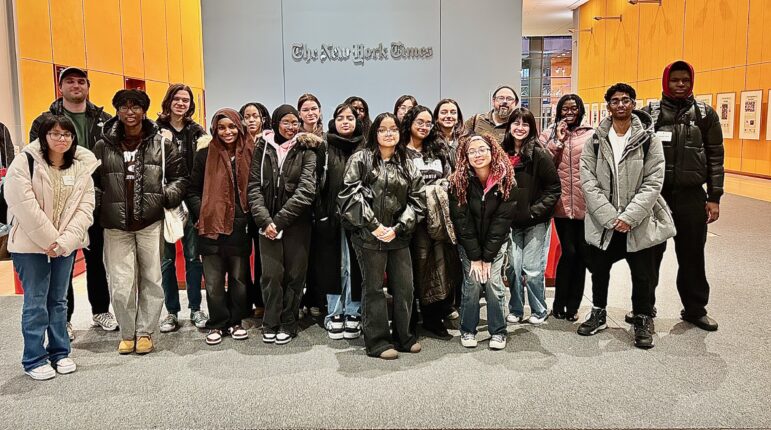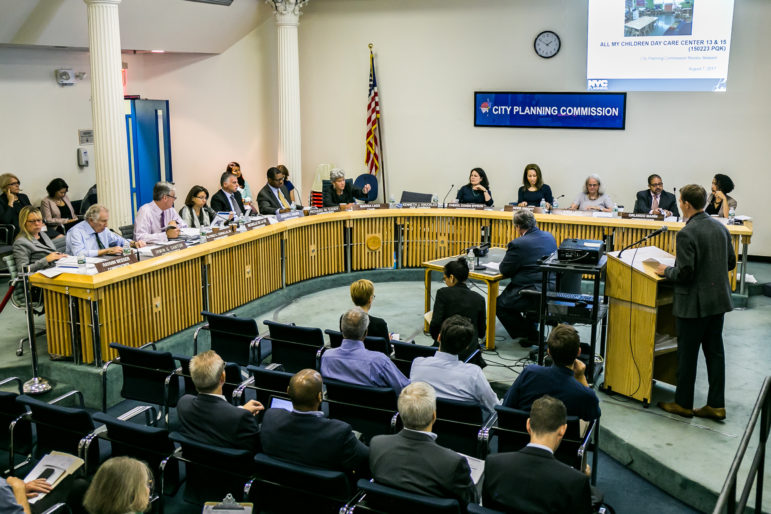Conventional wisdom says urban decline begins with certain factors: the disappearance of manufacturing jobs; an influx of poor migrants from the South, Caribbean or elsewhere; middle-class flight to the suburbs resulting in an eroded tax base. The city, its institutions and especially its schools are left bankrupt in purse and spirit. Yet, somehow, no one is ever to blame: It’s all the work of the inexorable ebb and flow of market forces.
But cities flourish or stall for other reasons as well, including political leadership, backroom deals and decisions made at critical crossroads. In Ghetto Schooling, Jean Anyon, chairperson of the Department of Education at Rutgers University’s Newark campus, throws a stark spotlight on the state and city policies, graft, and corruption that conspired to devastate the public schools of Newark, N. J., and the city itself. She also looks at similar problems in New York, Boston, Detroit, Chicago and other cities to show that educational reform will never be complete without a new commitment by government and the general public to true urban economic revival.
Anyon, who has been involved in principal and teacher training in the Newark Public Schools since 1989, reports that the downward spiral of the city and its schools began during the Depression, when a rural elite-controlled state legislature restricted borrowing by cities struggling to stay afloat. At the time, Newark had a city government where commissioners were independent and fought for jobs for their Jewish, Italian or Irish neighborhoods, but the city had no strong central executive or municipal body to fight for better schools.
As patronage and mismanagement flourished, wealthier citizens left Newark for the suburbs and the public school population became increasingly working class (although still largely white). Teacher standards were lowered in the 1940s–the easier to dispense jobs–and decisions and appointments made during this time reverberated for decades to come. By the time blacks from the South began to arrive in Newark in large numbers after World War II, the schools were already on a downward trend. As the industrial base began to erode, the Newark Public Schools emerged as one of the major employers in the city, entrenching the patronage system even deeper.
A brief period of reform swept through Newark’s city government in the 1950s, but left the school board untouched. Hiring was still dictated by political connections and personal favors with little concern for merit or ability, and educational standards continued to tumble. The administration of Mayor Hugh Addonizio in the 1960s drove a stake through the heart of reform efforts in what Anyon calls “the brazen consort of organized crime and elected officials.” Her chapter on that period revisits the greed and racism that marked city government at the time.
The Addonizio crew left a plundered and riot-scarred city to Newark’s first black mayor, Kenneth Gibson. The schools, now serving mostly African Americans and Hispanics, were in free-fall: Children were crowded into decrepit buildings that had been neglected for years, and many were under the guidance of ill-prepared teachers who had low expectations of their students.
At this point Anyon includes her first-hand observations of Newark teachers and students between 1989 and 1994. These short vignettes of classroom malaise and teacher incompetence are a powerful and disturbing addition to the historical analysis of the schools’ decline. A simple set of workshops is derailed by fire alarms, student discipline problems, teacher fatigue and an overwhelming feeling that the situation is too out of control to ever address.
In 1995 the State of New Jersey took over the administration of Newark’s public schools, which Anyon credits for mobilizing teachers and administrators who had been lethargic about reform. “[Top]-down authoritative change backed by state sanc-tions can make an important contribution to reform,” she writes.
In a brief section at the end of the book, Anyon recommends greater federal and state investments in job creation, worker retraining and infrastructure, and a tax on U.S. corporations to fund these urban revitalizations. Her call to arms is inspiring, but she doesn’t provide a political road map to accomplish this task. The book’s greatest strength for reformers is the historical illustration of how relationships and the dynamics of power affect public institutions and efforts at reform.
Anyon’s book comes at an appropriate time: Earlier this year the New Jersey Supreme Court addressed the wide gap between schools’ resources, ordering the release of some $246 million to 28 urban districts to bring them up to parity with funding in wealthy suburbs. Newark, which Anyon documents as severely underfinanced, will receive $23.6 million.
Ghetto Schooling is a major contribution to our understanding of urban education system mismanagement and how reform does–or doesn’t–work. It is also a warning that we must remain vigilant against the corruptions, large and small, that drain our cities and schools and deprive poor children and their families of the prosperity that others have enjoyed for so long.
Linda Ocasio, a former staff writer at the Daily News and New York Newsday, is an executive assistant to the state district superintendent of the Newark Public Schools. The views expressed here are her own.








